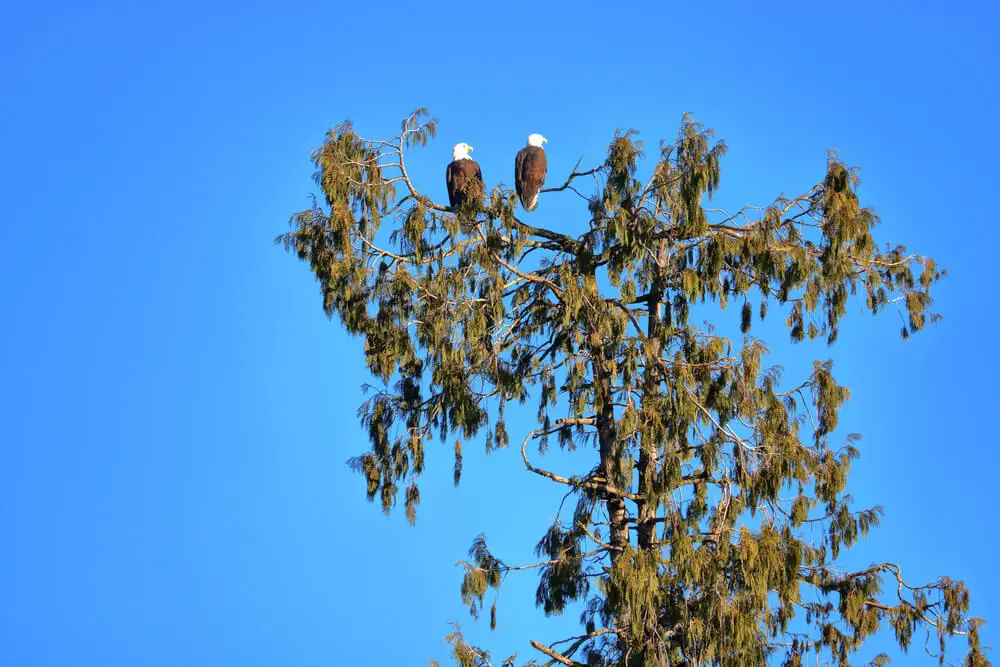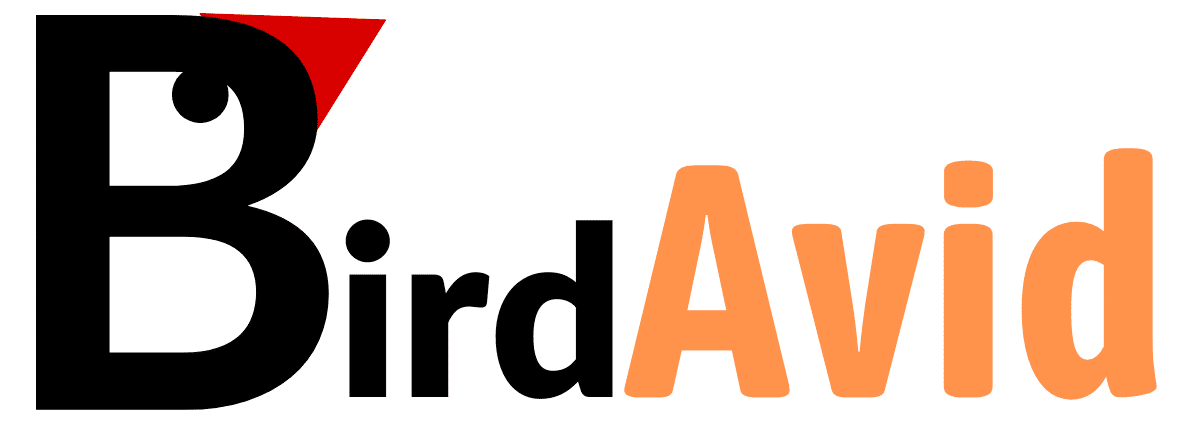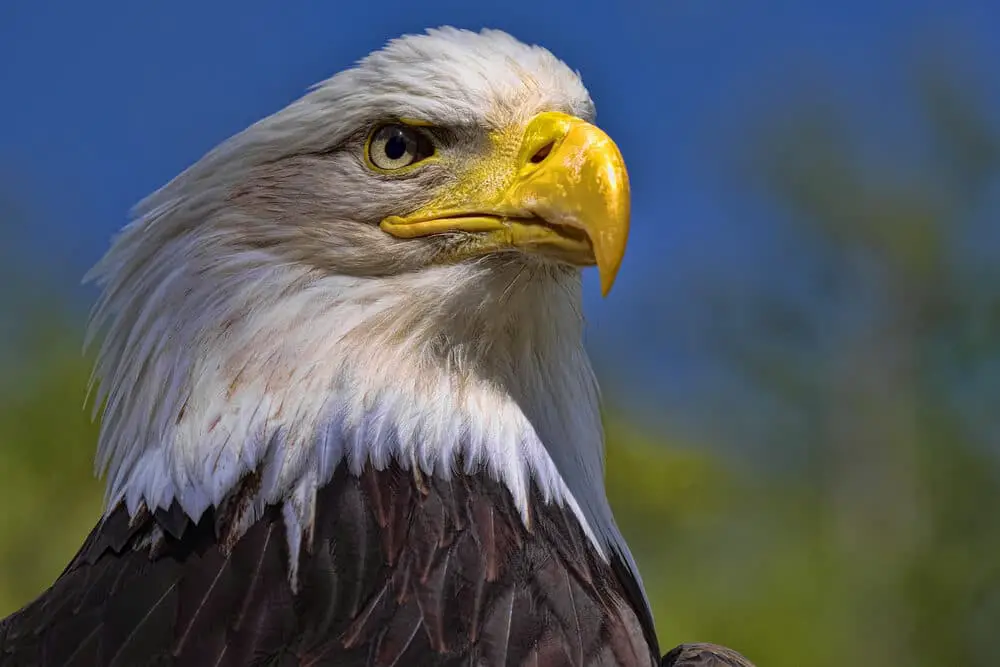The Bald Eagle (genus Haliaeetus – sea eagles) is the USA’s national bird and a wonderful sight to behold. Have you seen a Bald Eagle and were wondering if it was male or female? Are you wondering if the head color of the USA’s national bird can help you work out if a Bald Eagle is male or female?
Both adult female and male Bald Eagles have white heads, and from afar it’s difficult to tell an adult male and female Bald Eagle apart. The clearest difference between an adult male and female Bald Eagle is size. Bald Eagles are one of the few species where the female is larger than the male. An adult female Bald Eagle is around 25% larger than a male.
In this article, we explore the distinctive appearance of the Bald Eagle, explain all of the key differences between the male and female birds, and provide some interesting facts about this fascinating, iconic, and majestic bird of prey.
Recommended Birdwatching Equipment:

|
Check Here (on Amazon)
|

|
Check Here (on Amazon)
|
|
Check Here (on Amazon)
|
Bald Eagle Typical Appearance and Characteristics
Plumage
Adult Bald Eagles have very distinctive plumage. The colors and pattern are the same in both male and female Bald Eagles.
The typical adult plumage appearance, in both male and female birds, is a snow-white colored head, a white-colored wedge-shaped tail, and a brown body.
Eagle chicks do not have white plumage on their heads. When an eagle is first born (a hatchling) it’s fluffy down is usually replaced by all-over dark brown feather plumage. A young eagle is ready to leave the nest (a fledgling) at about 3 months old; at this stage, the young bird will have all-over dark brown plumage.

As young male and female Bald Eagles grow and mature, their plumage gradually changes from a dark brown to a lighter brown color, mottled with white.
A young eagle will shed and change its feathers about 4 times before it takes on the full adult appearance with a distinctive snow-white head, white tail, and brown body.
The whole process of changing the head plumage color from dark brown to white takes around 5 and a half years.
Size
Adult Bald Eagles are one of North America’s largest birds, with a heavy muscular body and long broad wings with a wingspan stretching over 6 feet.
Other Distinctive Features
The other distinctive features of adult Bald Eagles are brightly-colored orange/yellow legs, lemon-yellow eyes, and bills that are bright orange/yellow and hooked.
Key Differences Between Males and Females
Given that both male and female Bald Eagles have the same plumage colors and same plumage pattern, it is quite difficult to work out if a lone Bald Eagle is male or female.
Below, we explore all of the differences between male and female Bald Eagles to help you work out if you have seen a male, or a female, Bald Eagle.
#1. Size

When a mating pair of adult eagles are perched side by side, it’s often possible to see a difference in size between the two birds, with one bird noticeably larger than the other bird. From this, you can work out which bird is the male, and which is the female bird.
Surprisingly, female adult bald eagles are larger than their male counterparts by about 25%.
#2. Weight
An adult male Bald Eagle’s weight averages from 8lb to 10lb, whereas an adult female Bald Eagle weighs an average of around 10lb to 14lb.
When the female of a species is larger than the male, the technical term is ‘reverse sexual dimorphism’. This breaks the common natural pattern that males within a species are usually bigger and stronger than females.
Reverse sexual dimorphism makes absolute sense for birds of prey, where the smaller male Bald Eagles need to be more agile and productive food hunters.
The larger body size of the female Bald Eagle makes them more effective carers and protectors for the eggs and eagle chicks. The larger female birds will also be able to cover and heat the eggs and the eaglets more easily than the smaller males.
#3. Hallux Talon

A Bald Eagle has four talons on each foot.
Three of the talons point forward, while one points backward. The talon that points backward is called the hallux, which allows the Bald Eagle to grab and carry its prey with its feet.
The hallux talon tends to be shorter in male Bald Eagles compared to those in female Bald Eagles.
#4. The Shape Of The Beak
Beak depth is another distinction between male and female Bald Eagles.
The beak depth in male Bald Eagles is usually less than that of female Bald Eagles.
Saving Our Avian Resources (SOAR) is an organization based in Wyoming that is dedicated to saving the USA’s avian resources through rehabilitation, education, and research. SOAR has summarized a study on its website of the measurements of Bald Eagle beak depths.
The study measurements were taken using a dial caliper, between the top of the upper beak (maxilla) to the bottom point of the lower beak (mandible). In the study, male Bald Eagles had a beak depth range of 3.00 cm to 3.35 cm, while female Bald Eagles had a beak depth of 3.35 cm to 3.60 cm.
Raptor rehabilitation, education, and research (soarraptors.org)
#5. The Eagle Cry
A female Bald Eagle’s calls tend to be lower in pitch than those of the male. However, it is not that easy for humans to discern the difference between a male and a female Bald Eagle cry.
Bald Eagle Interesting Facts
- The Bald Eagle was chosen as the USA’s national bird and iconic symbol of the USA because of its strength, stately appearance, longevity, and, of course, because it is native to the USA.
- A Bald Eagle’s eyes are fixed and do not move within their sockets.
- Bald Eagles have scaly legs and feet with no feathers.
- An adult Bald Eagle can carry around 4lb of prey.
- Bald Eagles are apex predators and eat mostly fish and other birds. They will also catch and eat small mammals. Larger, bolder Bald Eagles have been known to attack and eat larger mammals such as deer fawns.
- A Bald Eagle can soar at a speed of about 30mph, and dive at speeds of up to 100mph.
- Adult Bald Eagles form mating pairs and mate for life. If one of the pair dies, generally the other will search for, and settle with, another mate.
- A female Bald Eagle typically lays two eggs in each hatch.
- The average lifespan of a wild Bald Eagle is 20 to 30 years.
- Bald Eagles are not actually bald. The name Bald Eagle comes from an archaic English word ‘piebald’ which means ‘white-headed’. It is thought also that the name comes from the fact that, from afar, a Bald Eagle may appear bald as its white head contrasts against its dark brown body.
- The Bald Eagle’s habitat covers most of North America, including all 50 US states, except the most northerly parts of Canada and Alaska, and most of Mexico. Bald Eagles do migrate south to avoid the very cold Canadian winters. Check out this guide to learn about how much cold they can survive.
- The size of Bald Eagles varies by location and generally corresponds with the Bergmann Rule. This rule generally states that the size of the animals within a species increases with distance away from the equator and the tropics. So, Bald Eagles from Florida or South Carolina, for example, usually will be smaller than Bald Eagles from Alaska or Canada.
You’ll Also Like To Read: A Black Bird with Yellow Beak? (Top 11 Examples & Pictures!)
Final Thoughts
Male and female Bald Eagles look very similar from afar. They both have the same plumage patterns and colors – a white head and tail, and a body covered in brown plumage. So, in answer to the question ‘Do Female Bald Eagles Have White Heads?’ The answer is yes, adult female Bald Eagles do have white-colored heads.
The main difference between female and male Bald Eagles is size. Females are larger than male Bald Eagles, by about 25%. The size difference benefits their respective roles – the male as the agile hunter, the female as the carer and protector of the eggs, and eagle chicks.
Other differences between male and female Bald Eagles can be found if you are able to look or listen closely – the beak depth, the hallux talon size, and the eagle cry or screech.
The National Eagle Center and the American Eagle Foundation are great resources for all things eagle-related. You can follow these links:
National Eagle Center – Wabasha, Minnesota
Bald Eagle – USA’s National Symbol | American Eagle Foundation (eagles.org)



